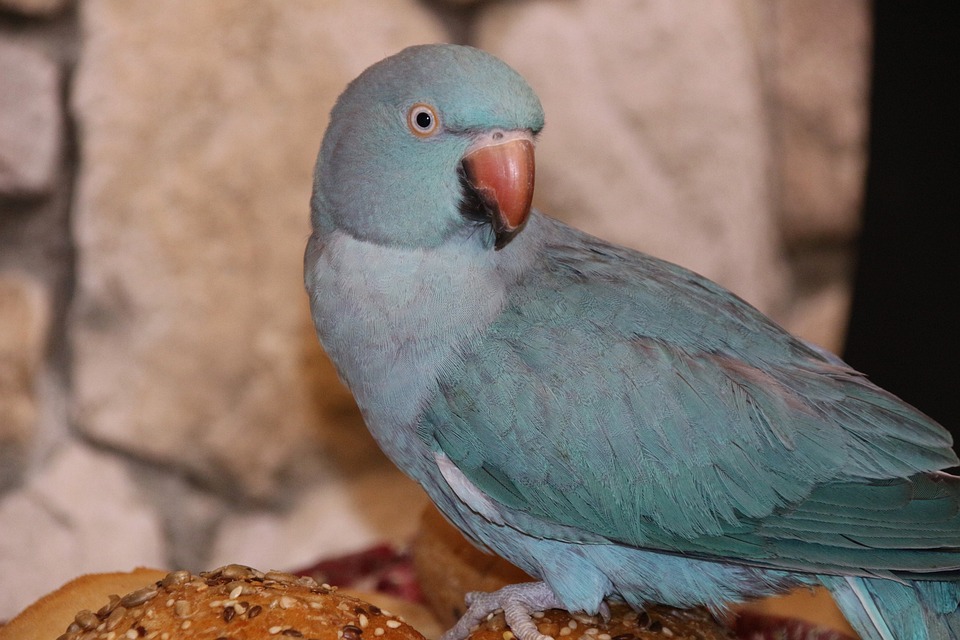Encouraging Parrots to Interact with Different Types of Food Puzzles: A Guide to Stimulating Parrot Behavior
Introduction:
Parrots are highly intelligent and social creatures that require mental stimulation to thrive. In their natural habitats, parrots spend a significant amount of time foraging for food, which promotes physical and mental exercise. However, in captivity, they often lack opportunities for these natural behaviors. Food puzzles are a great way to provide mental stimulation and engage parrots in their natural foraging behaviors.
I. Types of Food Puzzles for Parrots:
A. Foraging Toys:
Foraging toys are specially designed toys that require parrots to manipulate and solve puzzles to access their food. These toys simulate natural foraging behaviors and provide mental stimulation. Examples of foraging toys include puzzle balls, foraging boxes, and treat-dispensing toys. Introducing foraging toys to parrots can help prevent boredom and promote problem-solving skills.
B. Puzzle Feeders:
Puzzle feeders are devices that require parrots to work for their food by manipulating different parts of the feeder. These feeders can be designed to release food gradually or require specific actions to access the food. Puzzle feeders are a great way to slow down parrot’s eating habits and encourage them to engage in their natural foraging behaviors.
C. Foraging Mats:
Foraging mats are mats or blankets with hidden pockets or compartments where food can be hidden. Parrots need to search and explore the mat to find their food. Foraging mats provide mental stimulation and encourage natural foraging behaviors. They can be made from various materials, such as fleece or straw.
II. Encouraging Parrots to Interact with Food Puzzles:
A. Start with Familiar Foods:
When introducing food puzzles to parrots, it’s essential to start with their favorite foods. This will pique their interest and motivate them to interact with the puzzle. Gradually introduce new food items to the puzzle to expand their diet and encourage exploration.
B. Show and Tell:
Parrots are highly observant creatures. Showing them how to interact with the food puzzle can help them understand the concept. Demonstrate the behavior, such as spinning a puzzle ball or opening a puzzle feeder, and encourage them to mimic the actions.
C. Positive Reinforcement:
Positive reinforcement is a powerful tool in encouraging parrot interaction with food puzzles. Utilize rewards and treats to reinforce desirable behavior. Praise your parrot when they successfully solve the puzzle or show interest in it. This positive feedback will encourage them to continue engaging with the food puzzles.
D. Rotating and Varying Puzzles:
To maintain your parrot’s interest, it’s important to change the food puzzles regularly. Just like humans, parrots can get bored with the same puzzles over time. Offer different types of puzzles to cater to their preferences and challenge their problem-solving skills.
III. Frequently Asked Questions (FAQs):
1. Which types of food puzzles are suitable for different parrot species?
Different parrot species have different preferences and abilities. Consult with avian experts or do research to determine which types of food puzzles are suitable for your specific parrot species.
2. How often should I change the food puzzles?
It is recommended to change the food puzzles every few days to keep your parrot engaged and interested. However, monitor your parrot’s behavior and adjust the frequency based on their preferences.
3. Can food puzzles replace regular feeding routines?
Food puzzles should not replace regular feeding routines entirely. They should be used as a supplement to provide mental stimulation and enrichment. Ensure that your parrot receives a well-balanced diet through regular feeding.
4. How do I clean and maintain food puzzles?
Food puzzles should be cleaned regularly to prevent bacterial growth. Follow the manufacturer’s instructions for cleaning and maintenance. Use pet-safe cleaning products and ensure that the puzzles are completely dry before refilling them with food.
5. Are there any safety concerns with food puzzles and parrots?
When choosing food puzzles, ensure that they are made from safe, non-toxic materials. Avoid small parts that can be swallowed or pose a choking hazard. Supervise your parrot during their interaction with the puzzles to prevent accidents.
Conclusion:
Food puzzles are an excellent way to stimulate parrot behavior and provide mental enrichment. By introducing different types of food puzzles, such as foraging toys, puzzle feeders, and foraging mats, parrots can engage in their natural foraging behaviors and prevent boredom. Regularly engaging parrots in mental stimulation activities is crucial for their overall well-being and happiness. Explore various food puzzles and observe your parrot’s preferences to enhance their behavior and quality of life.









